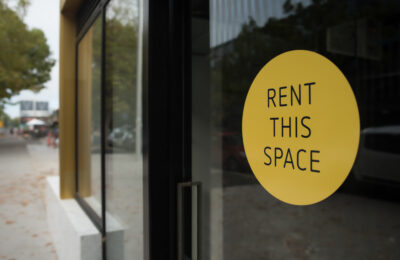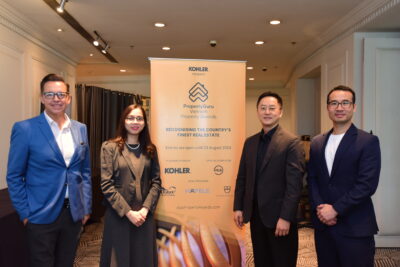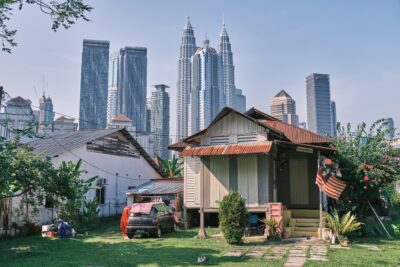‘For me, design is a sexy wife. And I want a sexy wife, not a beautiful one’
Nestled into the Swiss Alps, Jean-Michel Gathy’s modern timber and stone chalet strikes a balance of glamour and intimacy

Tucked into Andermatt, a Swiss village of little more than 1,200 people is award-winning architect Jean-Michel Gathy’s latest creation, The Chedi Andermatt. Gathy and his Kuala Lumpur-based firm Denniston designed the stone and timber structure to resemble a modern chalet, at home in the tiny Alpine town.
But beyond the unassuming façade is a glamorous interior, where details like bevelled glass, velvet curtains and rich jewel tones pay homage to the old Hotel Bellvue, a turn-of-the-century hotel that stood on the site till 1986. The clean lines of a glass entry hall and a 30-metre granite bar keep the feel distinctly modern, giving guests of the 104-room hotel and 44 apartments an experience that is at once unfussy yet high-drama.
Belgian-born Gathy is known for designing spectacular five-star resorts worldwide, collaborating with brands such as Aman, Cheval Blanc, Armani and St Regis, as well as designing the rooftop and infinity pool of Singapore’s Marina Bay Sands. We spoke with him about the inspiration for The Chedi Andermatt, why he eschews computer-aided drawing and how design is like a sexy wife.

I heard that you don’t use a computer when you design, that you design everything by hand. Is that true?
Absolutely. Absolutely. That makes me a dinosaur, certainly one of the rarest species in the world. Everything I do is by hand, because I believe that design is a research experience, and when the research is concluded then it is traced. But you first conceptualise, visualise, create… It’s like a sculpture. Would you see a sculptor sculpting on a computer? That’s not a sculpture, that’s a computer thing. Maybe that’s contemporary sculpture, but it is not, for me, artistic.
Maybe I’m old fashioned, call me what you want. But it’s not by coincidence that we get—every single year—a ‘Best in the World’ from Conde Nast or a gala event for this or for that. It doesn’t come from nowhere. I believe that it comes from the fact that I design by hand. By hand you can see it you can shape it, you can… I don’t know… there is something sexy in the hand design. And I don’t do it because I want to be sexy; I do it because I can’t use the computer! So it’s not a research of smug-ism, it’s a factual deficiency.
Tell me about the design of the Chedi Andermatt.
This hotel is built on the footprint of a hotel that was built at the turn of the century called the Bellevue Hotel, which was one of these old dames of Switzerland. About 20 or 30 years ago, the Bellevue was demolished, and we rebuilt on top of it.
In our interiors, we decided to have references to the Bellevue Hotel. The references were not design references, but philosophical references. So what we did is—because you can’t recreate the same building that was built in 1904—we took some of the inferences to the 1900s. In the 1900s you had beveled glass, chandeliers, big thick velvet curtains, you have dark green or gold or burgundy red… so we took some of the references and we incorporated them into the design. Therefore, you have a bit of old style in there on purpose, but the rest of the project is very contemporary. Not contemporary like a disco, of course … we have this mixture of references to 1904 and references to 2014. So there is a certain amount of juxtaposition, which is—in my opinion—what makes it attractive.

Chedi AndermattWhat are your favourite parts of the design?
We used high ceilings because we wanted to create drama. We have a lot of fireplaces which gives a feeling of cosiness and we have intimate areas. We have also a very quirky detail, we have a swimming pool which is 10 metres long, but that swimming pool comes up through the main lounge. So when you’re in the main lounge sitting around the fireplace, you can see people swimming. And that’s quirky because when you’re in the main lounge you can see the snow and the ice skating rink, but you have guys in bathing suits in the lounge. Of course it’s not in the lounge—in between there are windows and glass for insulation, of course—but visually it’s quite something. It’s very sexy. You have the feeling of energy, you have that feeling of proximity, of life… and it’s very sexy, very attractive. Everybody makes comments on it, and everybody likes it.

Did you face any challenges when designing The Chedi Andermatt?
When you build a resort property in a mountain environment, especially in Switzerland, one of the parameters you have is that you’re in a village, so whatever you build must integrate itself in the urban-scape of the village. You can’t build an Eiffel Tower in the middle of a village in Switzerland. In a village in Switzerland you must build something that, when it’s finished, it sort of blends into the architectural fabric of the village. That’s the first thing.
The second thing is that—in addition to laws and codes you have to follow to construct a product that suits the physical environment— the end product has to suit the social environment. You have to realise that when you come with a 104-room hotel with another 44 apartments, you bring a lot of people… Let’s say 350 people will be there at high season, plus the staff. In a small village like Andermatt, you are adding to the population by about 500 people. Now that’s major. You have to make sure that every social consideration is being taken, in terms of, not only things like car parks, but in terms of competition with the local people. So when you take that into consideration that determines the type of facilities you’re going to have. How many restaurants, what sort of restaurants. You don’t want to build a restaurant that competes with your neighbours… that’s no good. You always want to be friends with your neighbours.

You designed nine projects in 2013. How do you keep them all fresh and unique?
I believe that the essence in our company, what makes our company special, is that we design layers. We don’t have a sterile photogenic piece of art. We have a layered environment where you live. We are sensitive to emotions; we’re not sensitive just to beauty. I want a sexy wife, not a beautiful wife. I have a sexy wife. Is she beautiful? In my eyes, gorgeous. But to the neighbour? Maybe not. But I find her sexy. … And by that I mean she’s got soul, she’s attractive, she’s emotional, she has something. She’s layered. She’s not just like a beautiful piece of paper.
For me, design is a sexy wife. And I want a sexy wife, not a beautiful one.

Recommended
Meet the vagabond architect behind India’s housing scene
Vinu Daniel is helping to shake up India’s home building setting
Where Asian real estate stands in a fragmented, warmer world
Asia’s real estate industry faces many and varied challenges as external factors continue to bite
6 sights to see in Singapore’s Marine Parade
Handily located Marine Parade has emerged as a vibrant investment choice in the Lion City
There’s a township dedicated to health and wellness in Malaysia
Property seekers have their health needs catered for at KL Wellness City








